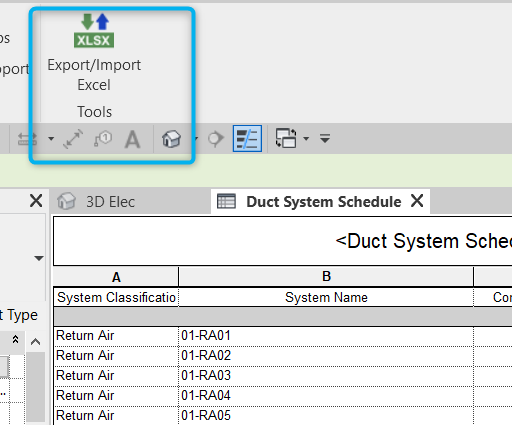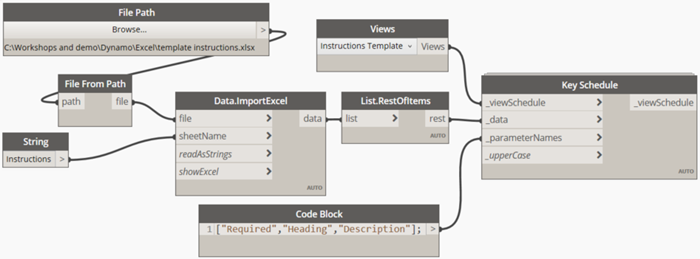Revit Tools: Your Secret to Precision and Productivity
Wiki Article
Revit Accelerator: Excel Assimilation Methods for Increasing Productivity and Cooperation
In this short article, we will certainly explore the advantages of integrating Excel right into your Revit process. Plus, we will certainly share finest techniques for seamlessly incorporating Excel into your Revit jobs. Get all set to supercharge your Revit experience with our Revit Accelerator: Excel Integration Approaches!Benefits of Excel Combination in Revit
The advantages of Excel assimilation in Revit are many and can greatly improve efficiency and collaboration. By perfectly linking these 2 powerful devices, you can improve your operations and conserve valuable time. With Excel combination, you can quickly import and export information between Revit and Excel, permitting you to leverage the staminas of both programs.
Another advantage of Excel integration is the ability to create dynamic routines and reports. By linking your Revit design to an Excel spread sheet, any changes made in Revit will immediately update in the matching Excel data. This makes it simple to produce updated timetables, amount departures, and various other task documents.
Excel assimilation in Revit additionally allows much better partnership among team members. With the ability to import and export data, you can conveniently share information with associates who may not have access to Revit. This advertises reliable interaction and enables much better control and decision-making.
Simplifying Operations With Revit and Excel
Simplifying workflows with Revit and Excel can substantially improve efficiency and partnership. By integrating these two effective devices, you can optimize your style procedure and boost communication within your group. With Revit, you can develop 3D models and produce detailed architectural and design documentation. When it comes to data monitoring and analysis, Excel is the go-to software application. By combining the capabilities of Revit and Excel, you can perfectly move information between both applications, eliminating the need for hands-on data entry and decreasing the danger of mistakes.
Utilizing Revit and Excel together allows you to leverage the toughness of each program - revit add ins. You can export data from Revit into Excel, where you can perform intricate computations, produce graphs and charts, and analyze the details in a much more efficient and well organized way. On the other hand, you can import information from Excel right into Revit, enabling you to promptly upgrade your models and documents based on changes made in Excel
The combination of Revit and Excel likewise promotes partnership among staff member. By sharing Excel documents, you can quickly communicate and collaborate on layout and construction-related information. This enhances sychronisation and ensures that every person is collaborating with the most updated details.
Optimizing Collaboration With Excel and Revit
To maximize partnership with Excel and Revit, you can seamlessly share and upgrade layout and construction-related data with your group. By integrating Excel with Revit, you can get rid of the demand for manual data entry and minimize the danger of mistakes. With just a couple of clicks, you can import Excel spreadsheets right into your Revit design, permitting you to easily accessibility and control the information. This assimilation enables you to work together extra effectively with your group, as everybody can work with the same information in real-time.Among the key benefits of utilizing Excel in combination with Revit is the ability to update data in both programs at the same time. Any type of adjustments made in Excel will automatically be mirrored in Revit, and the other way around. This makes sure that everyone is collaborating with one of the most up-to-date info, preventing confusion and saving valuable time.
In addition, Excel gives effective tools for examining and organizing information, which can greatly enhance your partnership efforts. You can create custom-made reports and graphes in Excel, assisting you to picture and interact vital job info effectively. When offering information to stakeholders or making educated decisions based on task metrics (revit add ins)., this can be particularly valuable.
Advanced Techniques for Increasing Efficiency in Revit Making Use Of Excel
By making use of sophisticated techniques in Revit, you can substantially raise your efficiency by leveraging the power of Excel. With Revit's Excel assimilation function, you can connect Excel spreadsheets directly to your Revit version, permitting you to conveniently manage and upgrade data.
Furthermore, you can make use of Excel macros to automate repetitive jobs in Revit (revit plugins). Macros permit you to videotape a collection of actions and play them back with a solitary click, conserving you time and effort. For instance, you can develop a macro to automatically generate room schedules or update parameter values in bulk.
Finest Practices for Excel Combination in Revit
Using Excel as a data administration tool in Revit permits reliable monitoring and upgrading of data. By incorporating Excel into your Revit process, you can improve your procedures and improve productivity. Among the most effective techniques for Excel integration in Revit is to produce a clear and organized data structure. This means making your Excel spreadsheets with columns and rows that line up with the specifications and groups in your Revit project. By doing so, you can easily import and export data in between Revit and Excel without any complication. An additional finest practice is to utilize formulas and functions in Excel to automate calculations and data control. This can conserve you time and ensure accuracy in your data management. In addition, it is essential to regularly update your Excel spreadsheets and sync them with your Revit job. By doing this, any type of changes made in Revit will be reflected in your Excel data, and vice versa. By complying with these best methods, you can efficiently make use of Excel as an information monitoring tool in Revit and boost your performance and cooperation.Conclusion
In final thought, integrating Excel with Revit can considerably improve efficiency and collaboration in the style procedure. By leveraging the power of Excel, Revit individuals can accomplish greater degrees of efficiency and partnership in their jobs.With Excel combination, you can easily import and export data between Revit and Excel, allowing you to utilize the toughness of both programs.
One of the key advantages of Excel assimilation is the capability to use Excel formulas and features within Revit. By connecting your Revit version to an Excel spread sheet, any changes made in Revit will automatically update in the equivalent Excel documents. On the other hand, you can import information from Excel into Revit, enabling you to swiftly update your models and paperwork based on changes made in Excel.
With Revit's Excel integration attribute, you can link Excel spread sheets directly to your Revit version, allowing you to conveniently take care of and upgrade data.
Report this wiki page